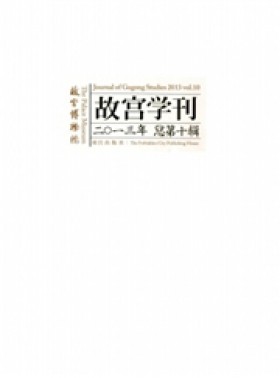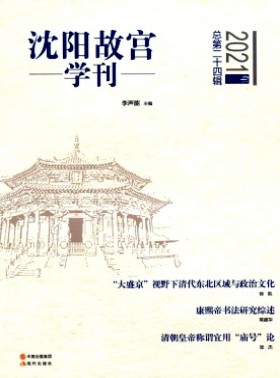前言:中文期刊网精心挑选了故宫导游词范文供你参考和学习,希望我们的参考范文能激发你的文章创作灵感,欢迎阅读。

故宫导游词范文1
大家好!我是星星导游社的导游王景瑶,也可以叫我小王。我们今天游览地方是故宫,希望可以和大家度过美好的一天。
故宫又称紫禁城,是明清两代的皇宫,堪称当今世界上无与伦比的建筑杰作。很多人慕名来到故宫,就是为了欣赏中国古代建筑的辉煌与帝王的奢华。
故宫始建于1406年,1420年竣工。这片堪称世界最宏伟的宫殿建筑群,南北长961米,东西宽753米,建筑面积有15.5万平方米,内有大小院落九十多座,房屋980间。都是用上等木材、琉璃瓦顶、青白的石座与各种金碧辉煌的彩画交相辉映,尽显出故宫的富贵荣华。故宫很大,它的庞大往往超出了人们的想象范畴。东华门,午门、西华门、神武门分守故宫东南西北4个方向。故宫内部可分为“外朝“与“内廷“两部分。外朝以太宫、交泰殿、坤宁宫为中心,是皇帝与后妃的住所。后人不远千里迢迢来到这座红色城池前瞻仰、游览、触摸、感怀……
好了,今天我的导游就到这里结束了,下面请大家自己观赏这美丽的风景吧!但是大家一定要记住,请大家不要乱扔果皮,谢谢配合。445分钟后,请大家来这里集合,愿你们开心快乐。
北京故宫前朝导游词二
各位来自世界各地的游客们,大家好!欢迎来到故宫,我是来自河南油田的王导游,下面的时间就由我带大家去细细游赏美丽的故宫。
故宫是世界上保存最完好,规模最大的古代木构架宫殿建筑群。看,这是故宫朝南的正门,叫做午门。午门的下面有五个拱门,正中间的门只有皇帝才能出入,即使地位很高的大臣,也只能使用两端的小门,地方上的诸侯只能使用两端最小的小门,一般的百姓连靠近故宫都不行,但是现在谁都可以进啦!
瞧!这个建筑叫太和门。是故宫里最大的木制大门。在这儿放着一对狮子,它强悍、威武、高大,代表着皇帝的威严。
正前面的大殿叫太和殿,是故宫内最大的建筑物,并且是过去北京城最高的建筑物,你们觉得它高吗?是的,它现在一点也不高,因为北京发展很快,高的建筑物比比皆是。
好了,我的讲解告一段落,大家自由游览,30分钟后在这儿集合。
北京故宫前朝导游词三
大家好,欢迎大家来到北京。北京有许多名胜古迹,今天我带领大家参观的是著名的故宫。我是大家的导游,我姓胡,大家可以叫我胡导,但大家请放心,我决不会给大家“胡导”的。这位是我们的司机师傅,也姓胡。所以,本次参观就由我们“二胡”组合来为大家服务。
我们现在正在去故宫的路上,借着这点时间,我先给大家介绍一下故宫。故宫是我国现存最大最完整的皇宫,在世界上堪称最为壮丽的古代建筑群,已有近600年的历史。故宫是我国明、清两代24个皇帝的皇宫。故宫的建筑布局分为外朝和内廷。外朝是皇帝举行大典和召见大臣的主要场所,内廷是皇帝处理日常政务和后妃及幼年皇子居住游玩的地方。故宫共有宫殿9000多间,雕梁画柱,金碧辉煌,非常华丽威严。
故宫导游词范文2
I am pleased to serve as your guide today.
This is the palace museum; also know as the Purple Forbidden City. It is the largest and most well reserved imperial residence in China today. Under Ming Emperor Yongle, construction began in1406. It took14years to build the Forbidden City. The first ruler who actually lived here was Ming Emperor Zhudi. For five centuries thereafter, it continued to be the residence of23successive emperors until1911when Qing Emperor Puyi was forced to abdicate the throne .In1987, the United Nations Educational, Scientific and Cultural Organization recognized the Forbidden City was a world cultural legacy.
It is believed that the Palace Museum, or Zi Jin Cheng (Purple Forbidden City), got its name from astronomy folklore, The ancient astronomers divided the constellations into groups and centered them around the Ziwei Yuan(North Star). The constellation containing the North Star was called the Constellation of Heavenly God and star itself was called the purple palace. Because the emperor was supposedly the son of the heavenly gods, his central and dominant position would be further highlighted the use of the word purple in the name of his residence. In folklore, the term ”
an eastern purple cloud is drifting” became a metaphor for auspicious events after a purple cloud was seen drifting eastward immediately before the arrival of an ancient philosopher, LaoZi, to the Hanghu Pass. Here, purple is associated with auspicious developments. The word jin (forbidden) is self-explanatory as the imperial palace was heavily guarded and off-explanatory as the imperial palace was heavily guarded and off-limits to ordinary people.
The red and yellow used on the palace walls and roofs are also symbolic. Red represents happiness, good fortune and wealth. Yellow is the color of the earth on the Loess Plateau, the original home of the Chinese people. Yellow became an imperial color during the Tang dynasty, when only members of the royal family were allowed to wear it and use it in their architecture.
The Forbidden City is rectangular in shape. It is960 meters long from north to south and750 meter wide from east west. It has9,900 rooms under a total roof area150,000 square meters .A52-meter-wide-moat encircles a -meter—high wall which encloses the complex. Octagon —shaped turrets rest on the four corners of the wall. There are four entrances into the city: the Meridian Gate to the south, the Shenwu Gate(Gate of Military Prowess) to the north, and the Xihua Gate(Gate of military Prowess) to the north, and the Xihua Gate(Western Flowery Gate )to the west ,the Donghua (Eastern Flowery Gate) to the east.
Manpower and materials throughout the country were used to build the Forbidden City. A total of230,000 artisans and one million laborers were employed. Marble was quarried from fangshan Country Mount Pan in Jixian County in Hebei Province. Granite was quarried in Quyang County in Hebei Province. Paving blocks were fired in kilns in Suzhou in southern China. Bricks and scarlet pigmentation used on the palatial walls came from linqing in Shandong Province .Timber was cut ,processed and hauled from the northwestern and southern regions.
The structure in front of us is the Meridian Gate. It is the main entrance to the forbidden City. It is also knows as Wufenglou(Five-Phoenix Tower). Ming emperors held lavish banquets here on the15th day of the first month of the Chinese lunar year in hornor of their counties .They also used this place for punishing officals by flogging them with sticks.
Qing emperors used this building to announce the beginning of the new year. Qing Emperor Qianglong changed the original name of this announcement ceremony from ban li(announcement of calendar)to ban shou(announcement of new moon )to avoid coincidental association with another Emperor` s name, Hongli, which was considered a taboo at that time. Qing Dynasty emperors also used this place to hold audience and for other important ceremonies. For example,when the imperial army returned victoriously from the battlefield ,it was here that the Emperor presided over the ceremony to accept prisoners of war.共
(After entering the Meridian Gate and standing in front of the Five Marble Bridges on Golden Water River)
now we are inside the Forbidden we start our tour, I would like to briefly introduce you to the architectural patterns befour us .To complete this solemn, magnificent and palatial complex, a variety of buildings were arranged on a north-south axis, and8-kilometer-long invisible line that has become an inseparable part of the City of Beijing. The Forbidden City covers roughly one –third of this central axis. Most of the important building in the Forbidden City weree arranged along this line. The design and arrangement of the palaces reflect the solemn dignity of the royal court and rigidly –stratified feudal system.
The Forbidden City is divided into an outer and an inner are now standing on the southernmost part of the outer count. In front of us lies the Gate of supreme Harmony .The gate is guarded by a pair of bronze lions ,symbolizing imperial power and dignity. The lions were the most exquisite and biggest of its kind. The one on the east playing with a ball is a male, and ball is said to represent state unity. The other one is a female. Underneath one of its fore claws is a cub that is considered to be a symbol of perpetual imperial succession. The winding brook before us is the Golden Water River. It functions both as decoration and fire control .The five bridges spanning the river represent the five virtues preached by Confucius :benevolence, righteousness, rites, intellence and fidelity. The river takes the shape of a bow and the north-south axis is its arrow. This was meant to show that the Emperors ruled the country on behalf of God.
(In front of the Gate of Supreme Harmony)
故宫导游词范文3
北京故宫是中国明清两代的宫殿,旧称为紫禁城,它是一座长方形城池,南北长961米,东西宽753米,四面围有高12米的城墙,城外有宽52米的护城河。
请大家看前面的五座汉白玉石桥,这就是金水桥。“前面的小朋友们你们知道这五座桥象征什么吗?”它们象征着“仁”、“义”、“礼”、“智”、“信”,是皇帝集美好的品质于一身。
跨过金水桥,我们就来到了太和门广场,这里是皇帝御门听政时百官待驾的地方。
穿过广场,前面就是故宫里首屈一指的大殿——太和殿。也是我们现存古建筑中最大的宫殿,俗称金銮殿。只有在皇帝即位、大婚、册立皇后、命将出征,以及元旦、冬至、万寿节的时候,才会在这里举行隆重的典礼。我们看在大殿的岔脊上,都装饰着一些小兽,把这些小兽依次排列在高高的檐角处,象征着消灾灭祸、逢凶化吉,还含有剪除邪恶、主持公道之义。重脊前为什么用仙人骑凤呢?传说:齐国国君齐王,一次作战中失败,来到一条大河的岸边,走投无路,后边追兵就要到了,危急之中,突然,一只大鸟飞到眼前,齐王急忙骑上大鸟,渡过大河,逢凶化吉。古人把它放在建筑脊端,也表示骑凤飞行,逢凶化吉。
大家跟紧我,看大殿内金砖铺地平整的如一面镜子,光滑细腻,像是洒了一层水。这就是金銮殿名字的由来。那么金砖真的是金的吗?其实这是一种用特殊方法烧制的砖。
这样宏伟的建筑据说光准备的工作就持续了11年,修建历时14年。劳动人民付出了无数的血汗。故宫里珍贵的楠木多生长在崇山峻岭里,百姓冒险进山采木,很多人为此丢了性命,后世留下了“入山一千,出山五百”来形容采木所付出的生命代价。
故宫导游词范文4
故宫导游词作文450字范文【1】
大家好!欢迎游客们到故宫观光游览。今天,我将带领大家游览故宫,希望游客们能喜欢我!
游客们!故宫博物院是在明、清两代皇宫紫禁城的基础上建立的一座集古代建筑群、宫廷收藏、历代文化艺术为一体的大型综合性博物馆。紫禁城占地面积约100多万平方米,建筑面积约1万平米。故宫里一共居住过24位皇帝,第一位是明代永乐皇帝朱棣,最后一位是清代宣统皇帝溥仪,统治全国长达491年。所以说故宫的历史非常悠久呢!
游客们,请往上看,这就是午门,在古代,杀什么人都要在午门前杀呢!从午门进去,我们就可以看到内金水桥。从内金水桥过去,过一个太和门,就可以看到宫廷原状陈列的太和殿、中和殿、保和殿,是皇帝听政的地方,宏伟之极。从保和殿出来,过一个乾清门,就来到乾清宫、交泰殿和坤宁宫,传说修故宫时,是为了能天下太平,才修的这三个地方呢。过了坤宁门,就是御花园,御花园里景色秀美,有许多奇形怪状的石头,遇到这些石头时,记住留影纪念喔!
再过了顺贞门和神武门,我们的故宫之游就结束了。回头看看这雄伟的故宫,是不是有些舍不得呢?
故宫导游词作文450字范文【2】
Hi!女士们,先生们,欢迎来参加本次故宫的游览活动,我是小文,本次游览活动由我做大家的导游,请多关照。故宫位于北京市城区中心,是明、清两代的皇宫,是当今世界上现存规模最大、建筑最雄伟、保存最完整的古代皇家宫殿。
故宫又叫紫禁城。紫禁城是中国五个多世纪以来的最高权力中心,它以园林景观和容纳了家具及工艺品的9000个房间的庞大建筑群,成为明清时代中国文明无价的历史见证。朋友们,立在我们前面的就是故宫的正门叫午门,午门又称五凤楼。
它建成于公元1420年,位于端门之北,雄伟壮观。走进正午门,我们就到了故宫里面了,这是第一院落,前面那五座桥,叫汉白玉桥,它们象征五德:仁、义、礼、智、信,是皇帝五德齐全的意思。走过金水桥,就来到太和广场,这里是明代皇帝御门听政时百官待驾的地方。下面带大家去太和殿。各位朋友,我们眼前的太和殿是整座紫禁城内级别最高的建筑,只有皇帝举行盛大典礼时才使用。
太和殿高35米,东西长64米,南北宽33米,面积为2377平方米。它面阔十一间,进深5间,规模为紫禁城内大殿之最。经过今天的介绍和参观,大家已经对故宫基本了解了吧,希望大家常来这儿玩。
故宫导游词作文450字范文【3】
大家好!我叫朱xx,是大伙的导游,大伙可以叫我朱导。今天,我们要观光世界遗产北京故宫
在旅游前,请允许我提出几个进故宫应该注意的事项一、请不要抽烟。二、请不要乱丢垃圾。三、请不要随意离开队伍,以免掉队。好,现在就开始游故宫吧!
我先介绍一下故宫:故宫旧称紫禁城,始建于明永乐四年至十八年,也就是公元一四零六年到一四二零年。是明清两代的皇宫,封建皇朝的统治中心。紫禁城周长3400余米,城墙高10米,城墙下宽8。6米,上宽6.66米。
大家走过护城河,就可以看到前朝的宫殿。前朝的宫殿以太和殿、中和殿、保和殿为中心。三大殿之后为内廷,有乾清宫、交泰殿、坤宁宫以及东西六宫。乾清宫是皇帝的寝宫,其后的坤宁宫是皇后的寝宫。这三宫总称后三宫。我们可以在这儿多拍些照片,作为纪念。
故宫导游词范文5
风雪中的身影
“真是2008年的第一场雪啊!又要组织扫雪队了!”爸爸边翻看着《扬子晚报》的头条新闻,边抬头望着窗外漫天飞舞的雪花说道,平常平静的他今天却皱起了眉毛,一脸的严肃,好像不是很欢迎这场“离别”很久的大雪。但是,“下雪”这个词在我们孩子们的字典里总是充满着快乐和喜悦。
“又是一场大雪!”从石头城放学后我一边踏着积雪慢慢地走,嘴里不时地嘟囔着。我边走边随手抓起一把雪往远处扔去,把车上的雪肆意地扔到地上,和同学打雪仗,互相在厚厚的积雪上追逐着、打闹着,雪花带给了我们太多的乐趣。只顾玩雪的我们,还没有注意到,天上又飘下了朵朵雪花,一开始还是很稀疏,渐渐地雪花便像鹅毛般纷纷扬扬地飘落下来,像千万只蝴蝶在空中飞舞,像春风抖落下万树梨花,更像天女撒下漫天的白絮……
雪下得越来越大,我尽力地加快步伐想早点到家。这时,雪花好像在呼朋唤友,紧紧抱成一团,从高高的天空中簌簌地跳下来,还兴奋地打着旋儿。我还是被这片雪白的景色吸引了,渐渐停下脚步,往远处望去,满眼银装素裹,江山分外妖娆,浓浓的雪花挂满枝头,好像春天里竞相怒放的梨花。啊,真美!就在我欣赏这美景时,我的目光不经意地扫到一位环卫工人身上,他穿着橘黄色的环卫服,佝偻着腰,饱经风霜的脸上布满了皱纹。他手里拿着一把铁锹,在风雪中清除路上的积雪,缓缓前行,飘舞的雪花又将他和他清除过的路面覆盖起来。我当时觉得他很老,毛杂杂的胡子,就像是一尊活动的雕像。我的目光久久地定格在那环卫工人的身上,我脸上的喜悦荡然无存,心里感到空落落地,好像后悔自己做了什么。
这时,我又想起了爸爸那张严肃的脸……
故宫导游词范文6
一、涉外导游词的概述
涉外导游词是涉外导游人员在途中或景点等地向国外游客提供口头讲解服务所使用的,其主要功能是使国外游客更好的了解我国的自然风光和民俗风情。
二、涉外导游词的特征
(一)服务对象明确。服务对象明确,即始终以旅游者为出发点。旅游业是为旅游者服务的,这也决定了导游词必须以旅游者为出发点。这正是导游词及其翻译的最大特点。由于中外文化差异很大,外国游客往往对中国老百姓人人皆知的情况不一定了解,因此在讲解时要本着以旅游者为出发点,提供一些人文历史、风土人情等方面背景的知识,以帮助他们理解,唤起他们的兴趣。
例如:把“三月三节”翻译成San Yue San Festival还不能让外国游客理解,我们可以翻译成“on the third day of the lunar third month,”如此翻译,外国游客应该能明白“三月三节”的意思。
(二)口语化。涉外导游词是在旅游过程中外语导游员与游客进行口头交流所使用的语言,引导旅游者完成旅游活动。如果使用的句子过于复杂,就会给游客带来困惑,所以导游词的讲解应该是简单、轻松、活泼,给游客带来愉悦和美感。口语化的导游词拉近了导游与游客之间的距离,使游客非常容易接近。
(三)古诗词多。涉外导游词中常引用各种类型的古诗词。不少歌颂祖国大好河山的诗词正是通过导游之口,再经旅游者(笔头或口头)传到海外的。有些古诗词通过译者运用一些手法加以翻译,达到了较好的效果。若译文是欢迎词,尽量使用简单句,以及口语化的语言,这样能拉近导游与游客之间的距离,使游客非常容易接近。
三、涉外导游词的翻译技巧
涉外导游词的翻译只有把握翻译的基本原则,采取各种方法有机结合,对译文进行适当的调整,才会使原本晦涩或者具有浓厚文化信息的导游词变得通俗易懂,易为游客所接受。
(一)类比法。
涉外导游词的特征之一是服务对象明确,即始终以旅游者为出发点。因此为使涉外导游词在游客心中产生积极的反响,可以采用“由此及彼”的方法拉近外国游客与中国文化的距离,这样容易使他们产生认同感和亲近感。涉外导游员在带领美国团队来我国观光旅游时,可以在介绍故宫营造时长的时候跟美国的年代进行类比。采取这样的类比手法能使外国人将他们陌生的中国历史年代与他们熟悉的历史或人物所处的年代联系起来,便于他们理解。
(二)改写法或删减法。
涉外导游词的翻译,改写和删减都是用的比较多的手段。首先谈论下改写法,改写是指在不损害原文信息的前提下,对原文不符合译语习惯的语句、语序进行必要的改造和调整,让游客感觉通俗易懂。
我们再来谈论一下删减法,大家都知道汉语在描写景物时,主观色彩极浓,辞藻华丽,文笔夸张。而英语追求的事简洁明快,所以刻意追求原文之美,会使外国游客感到语言嗦,华而不实,根本无法领略其中美感。因此译者在翻译导游词时需要仔细推敲原文,透过其华丽的外表,抓住实质具体的内容,译出符合英语表达习惯的译文。
例如:原文:这里3000座奇峰拔地而起,形态各异,有的似玉柱神鞭,立地顶天;有的像铜墙铁壁,巍然屹立;有的如晃板垒卵,摇摇欲坠;有的如盆景古董,玲珑剔透……,神奇而又真实,迷离而又实在,不是艺术创造胜似艺术创造,令人叹为观止。
译文:3000 crags rise in various shape-pillars columns ,walls shaky egg stacks and potted landscapes…conjuring up fantastic and unforgettable images.
译文删掉了原文堆砌的辞藻,根据原文内容译出了具体的实物,符合英语的表达习惯,也体现出了口语化的特征。
(三)增补法
增补也可称为增词或加注,就是在翻译有关人名、历史事件、地理名称、风俗、典故、诗词等词语时予以简要的说明、解释或补充。
例如:涉外导游人员在向游客介绍“秦始皇”这个历史人物时,如果译为“Qin Shihuang”,the first emperor in Chinese history who unified China in 221 B.C.”。
外国游客很可能认为“Qin Shihuang”是中国第一个皇帝的名字,而不认为这三个字就是代表中国第一个皇帝的意思。所以我们要运用增补法,可译为“Qin Shihuang[(秦始皇)means the first emperor both in Qin dynasty and the Chinese history by the name of Yingzheng(嬴政)]” 。
总之,在涉外导游词翻译中,我们不仅要了解其特征,还要掌握一定的翻译技巧,这样才能更好的传播中国文化,让外国游客更好的了解中国,从而吸引更多的外国游客来我国观光旅游,达到向世界宣传中国文化的目的,促进我国涉外旅游业的发展。
参考文献:
[1]金惠康.跨文化旅游翻译[M].北京:中国对外翻译出版公司,2006:309-310.
[2]姚宝荣、韩琪.旅游资料英译浅谈[J].中国翻译,1998:27-30.



